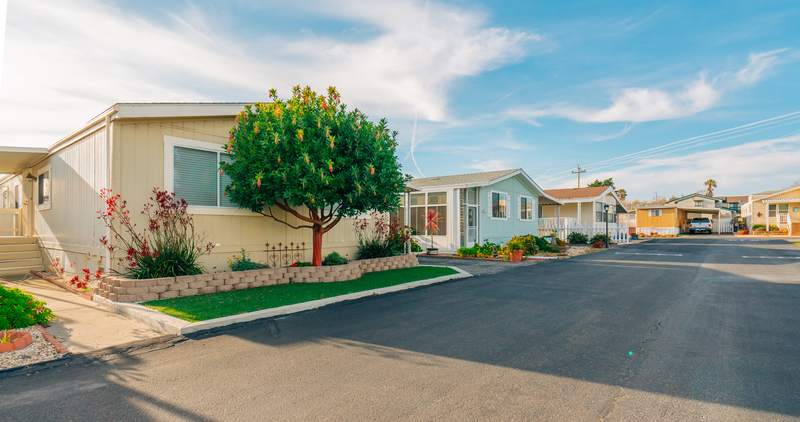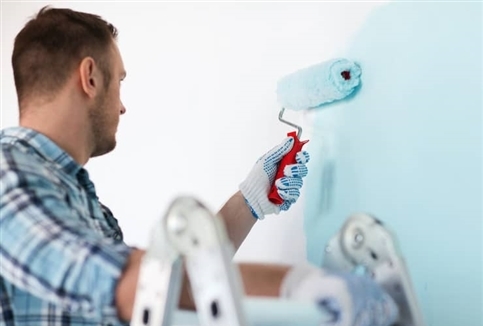Your home isn’t just a place to entertain, eat and sleep. It’s also likely your biggest financial asset. The cash value of your home enables you to do a lot of things with it. Most are familiar with refinancing, specifically the term cash-out refinance, but a cash-in refinance can help open up more financial flexibility for you.
In this article, we’ll take on the basics of a cash-in refinance and why you might want to look into one. We’ll also touch on disadvantages and alternatives.
What Does Cash-In Refinance Mean?
A cash-in refinance is one type of refinancing that allows a borrower to put a lump sum of money into a home in order to build up home equity – the difference between a home’s value and your outstanding mortgage balance. You can think of a cash-in refinance as another chance to put down a sizable down payment.
This can enable you to secure better terms because the less money mortgage lenders need to loan you, the less risk they take on. You could get a lower interest rate because it’s considered a safer investment on their end. You also end up with a smaller principal balance in the new transaction.
See What You Qualify For
Buy A Home
Discover mortgage options that fit your unique financial needs.

Refinance
Refinance your mortgage to have more money for what matters.
Tap Into Equity
Use your home’s equity and unlock cash to achieve your goals.
What’s The Difference Between Cash-In And Cash-Out Refinances?
A cash-in refinance is the opposite of a cash-out refinance. In a cash-in refinance, you’re putting more equity into your home. In a cash-out refinance, you’re converting existing equity in your home into cash that you can use for other things such as home improvements, debt consolidation or to shore up your retirement account, for example. In return, you’re taking on a bigger mortgage balance.
Not everything is different. In either case, when you refinance, your existing mortgage is being paid off and you’re taking on a new loan with different terms. Many people also choose to take advantage of the opportunity to refinance while interest rates are low. The most recent reason for these real estate market conditions is the actions of the Federal Reserve keeping short-term rates low to combat the economic effects of the COVID-19 pandemic, although they are beginning to unwind those support policies to give flexibility in the next crisis.
An easy way to remember this is that with a cash-in refinance, you go into closing ready to cut a check. With a cash-out refinance, you get a check a few days after the loan closes.
When Is Cash-In Refinancing A Good Idea?
A cash-in refinance can help you accomplish several things at once. Let’s run through them.
To Lower Your Monthly Payments
Because a cash-in refinance involves putting more equity into your home, you’re lowering your mortgage balance. If you keep the term the same, you’ll typically have a lower monthly payment, assuming interest rates haven’t increased significantly. If interest rates are the same or higher than when you originally closed, you might choose an alternative that we’ll discuss later on.
Check out our mortgage refinance calculator to see how much you could save with a lower interest rate and a smaller principal.
To Lower Your LTV So You Can Refinance
Increasing your equity in a cash-in refinance also lowers your loan-to-value ratio (LTV), increasing your flexibility to refinance in the future. You can think of LTV as the inverse of equity. If you have 20% equity in your home your LTV is 80%.
LTV is important because most major loan options outside VA loans require you to have at least 20% equity in your home after the refinance in order to take cash out. Although you’re not looking to take cash out in a cash-in refinance, you might be looking to give yourself the option in the future by making a sizable payment now. Additionally, if you buy a 3- or 4-unit property, you’ll need to have a maximum of no more than 75 – 80% LTV to refinance.
To Shorten Or Lengthen Your Loan Term
Another reason to do a cash-in refinance is to shorten or lengthen your loan term. If you shorten your loan term, you end up with a lower rate compared to loans that have longer terms because investors don’t have to project inflation as far out. You also save thousands on interest by paying off your new mortgage sooner.
On the other hand, going with a longer-term mortgage means the opportunity to have a lower monthly payment. The trade-off is a higher interest rate because inflation is being projected further. You also pay more in interest by taking longer to pay the mortgage off. However, if you need the money you’re putting into your house for other things, this is a good option.
To Go From An ARM To A Fixed-Rate Mortgage
Adjustable-rate mortgages (ARMs) have the advantage of a lower interest rate relative to current market rates because the adjustable nature means that investors don’t have to try and guess where inflation is going to be. The interest rate can always adjust up or down after the initial fixed period. People might even get into ARMs because they plan to move before the adjustment happens.
However, if you find yourself staying in your home longer or interest rates are trending up around the time of your adjustment, consider a fixed-rate mortgage. With a fixed-rate, you would have payment certainty for the length of the term. A cash-in refinance can make sense in this scenario.
To Get Rid Of Mortgage Insurance
Conventional and FHA loans have forms of mortgage insurance that you have to pay if you make less than a 20% down payment when you buy your home. In fact, on FHA loans with an initial down payment of less than 10%, the mortgage insurance sticks around for the life of the loan. Although this does help you afford to buy a home without tapping your entire life savings, no one likes paying an extra monthly fee if it can be avoided.
By doing a cash-in refinance, you can increase your equity to a level of at least 20%. By refinancing into a conventional loan, you can avoid future mortgage insurance payments on your home, assuming it’s a primary property.
To Refinance From A Jumbo Loan To A Conforming Mortgage
Maybe you’re looking to refinance, but you currently have a jumbo loan and would like to get into a loan with regular conforming mortgage limits – that is, $726,200 for a 1-unit property, for example. After all, mortgage rates may be similar but requirements can be stricter for jumbo loans. You could choose to do a cash-in refinance to get under the conforming mortgage limit.
To Take A Step Toward A Debt-Free Future
For some, a cash-in refinance can be seen as a stepping stone to paying off your current mortgage faster. Many homeowners have a formal or informal goal to be debt-free as soon as possible. By putting a large chunk of change into their home and possibly shortening the term, they can pay off the mortgage that much faster.
Refinance Calculator
Get loan options at today’s interest rates that show what your new monthly payment could be. Just answer a few simple questions.
What Are The Disadvantages Of Cash-In Refinancing?
The disadvantage of a cash-in refinance is that refinancing in general can be expensive. Therefore, it’s important to make sure that the benefits of refinancing outweigh the costs.
Costs Of Refinance
Refinancing fees are costs associated with setting up your loan. Although they can be cheaper than costs on the purchase because there is not quite as much to do, you need to anticipate paying around 2% – 6% of your loan amount in closing costs. Among the costs necessary for refinancing may be an appraisal, lender’s title insurance and the title search.
You won’t have to pay for things like a home inspection unless a concern is brought up during the appraisal. The important thing is to be able to take that estimate and do the math to see if the benefits of the refinance outweigh the costs of refinancing.
Lost Liquidity
If you come into a fair amount of money, whether it’s from something like a work bonus or an inheritance, it’s never a bad idea to prioritize your emergency funds. When you put a bunch of cash into your home, you can’t get it back out again without refinancing. This takes both time and money. You might want to put your funds toward more liquid assets that can be easily converted to cash.
Opportunity Costs
If you have extra money to put toward your mortgage, consider what else you could do with that money to make the best use of your dollars. If you’re getting significant savings from a lower interest rate and/or eliminating mortgage insurance payments, it could make sense to move forward.
On the other hand, mortgage interest rates are starting to tick up and they were likely pretty low if you bought or refinanced any time in the last several years. With that in mind, you might get a greater return by putting that money into investments than you would save on interest by putting the money into your home equity.
If you’re unsure what’s right for you, it never hurts to speak with a financial advisor who can give you guidance on your personal situation.
Are There Alternatives To A Full Cash-In Refinance?
There are a couple of alternatives to a cash-in refinance strategy that you can consider.
Mortgage Recast
In a mortgage recast, you make a large payment to your mortgage servicer to pay down your loan. During this process, your servicer will do what’s called a mortgage re-amortization for you. Re-amortization means they lower the balance by the amount you’ve chosen to pay off, but your loan term remains the same and your payment is lowered to reflect your lower loan balance.
Here’s an example:
Let’s say you have a $250,000 loan amount at a 3.25% interest rate over a 30-year term. Your monthly payment would be $1,088.02 and you’d be paying $141,685.71 in interest over the life of the loan. A couple of years later, you receive $50,000 in inheritance that you choose to put toward your mortgage in a recast. Your new loan amount would be $200,000 and the rate stays the same.
Your new monthly payment for the remaining 28 years is $907.34. You end up paying $104,867.67 in interest. And you don’t have to refinance. You can check out your own scenarios with our amortization calculator.
There are a couple of things you should know if you’re looking into a recast. You can’t do this with government loans like those from the FHA or VA. Servicers also may charge fees for this. Finally, there’s usually a minimum amount you have to pay off, which is $10,000 for us. However, this is much cheaper than refinancing.
Extra Payments
If you haven’t come into a windfall, but instead have a more modest sum of extra money, you can also make extra payments directly toward the principal to save on interest and possibly take several years off your mortgage over time. Let’s run through an example. Let’s take that $250,000 30-year loan scenario at 3.25% interest from earlier.
Instead of recasting, you decide to put $100 per month extra toward your principal balance. If you were to do this, you would save $18,121.74 and pay off your mortgage 3 years, 6 months early.
One important thing to note is that you do have to communicate with your mortgage servicer that you would like to apply the payment directly to your principal.
The Bottom Line: Make Sure Cash-In Refinance Savings Justify The Costs
A cash-in refinance can help you lower your monthly payment and get better terms on your mortgage. However, when you do this, it’s important to know what your goals are and make sure that the benefits outweigh the costs of refinancing. Alternatives include doing a mortgage recast and making extra one-time or periodic payments on your mortgage balance.
View Your Refinancing Options
See recommended refinance options and customize them to fit your budget.

Kevin Graham
Kevin Graham is a Senior Writer for Rocket Companies. He specializes in economics, mortgage qualification and personal finance topics. As someone with cerebral palsy spastic quadriplegia that requires the use of a wheelchair, he also takes on articles around modifying your home for physical challenges and smart home tech. Kevin has a bachelor's degree in journalism from Oakland University.












